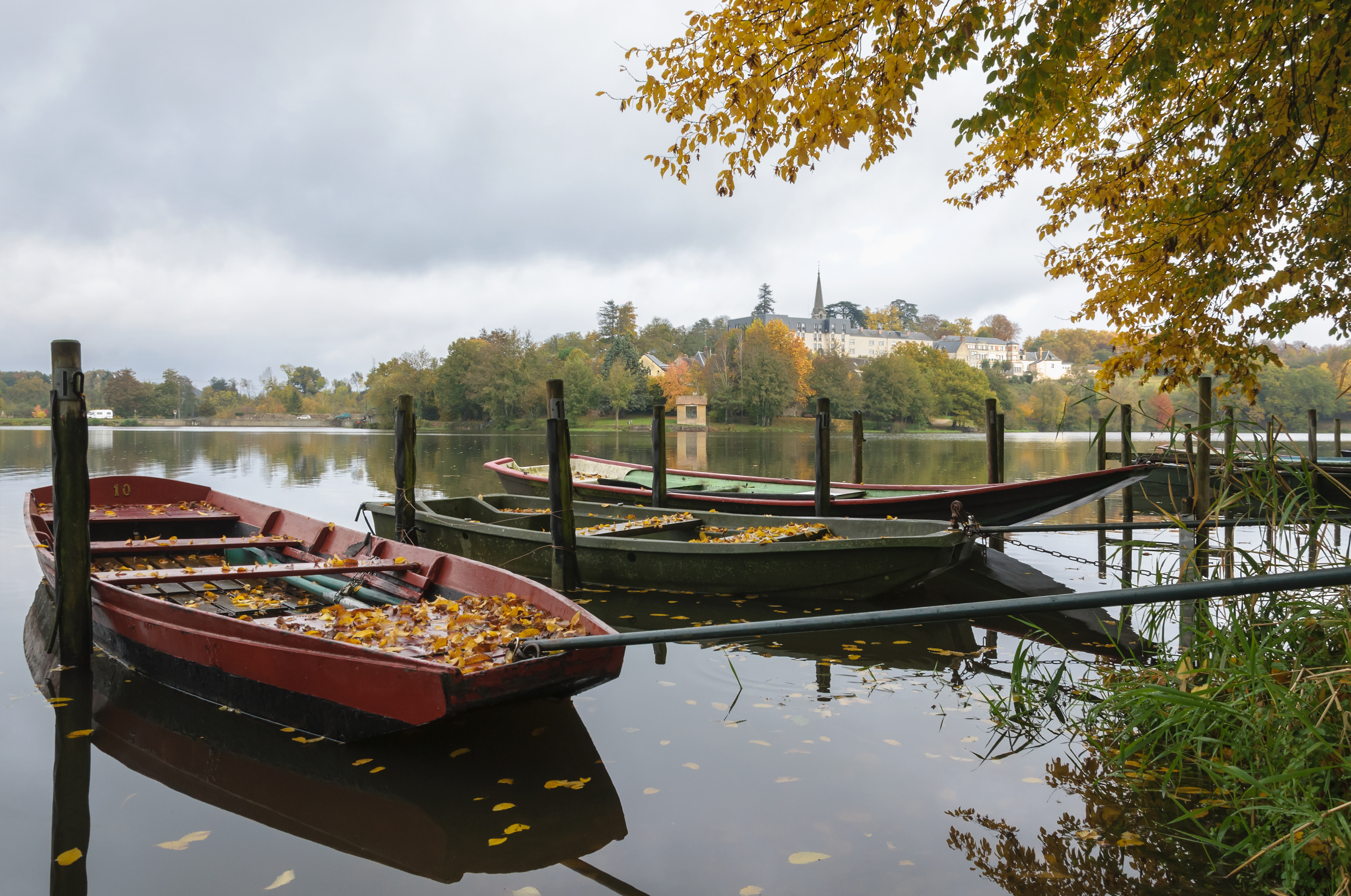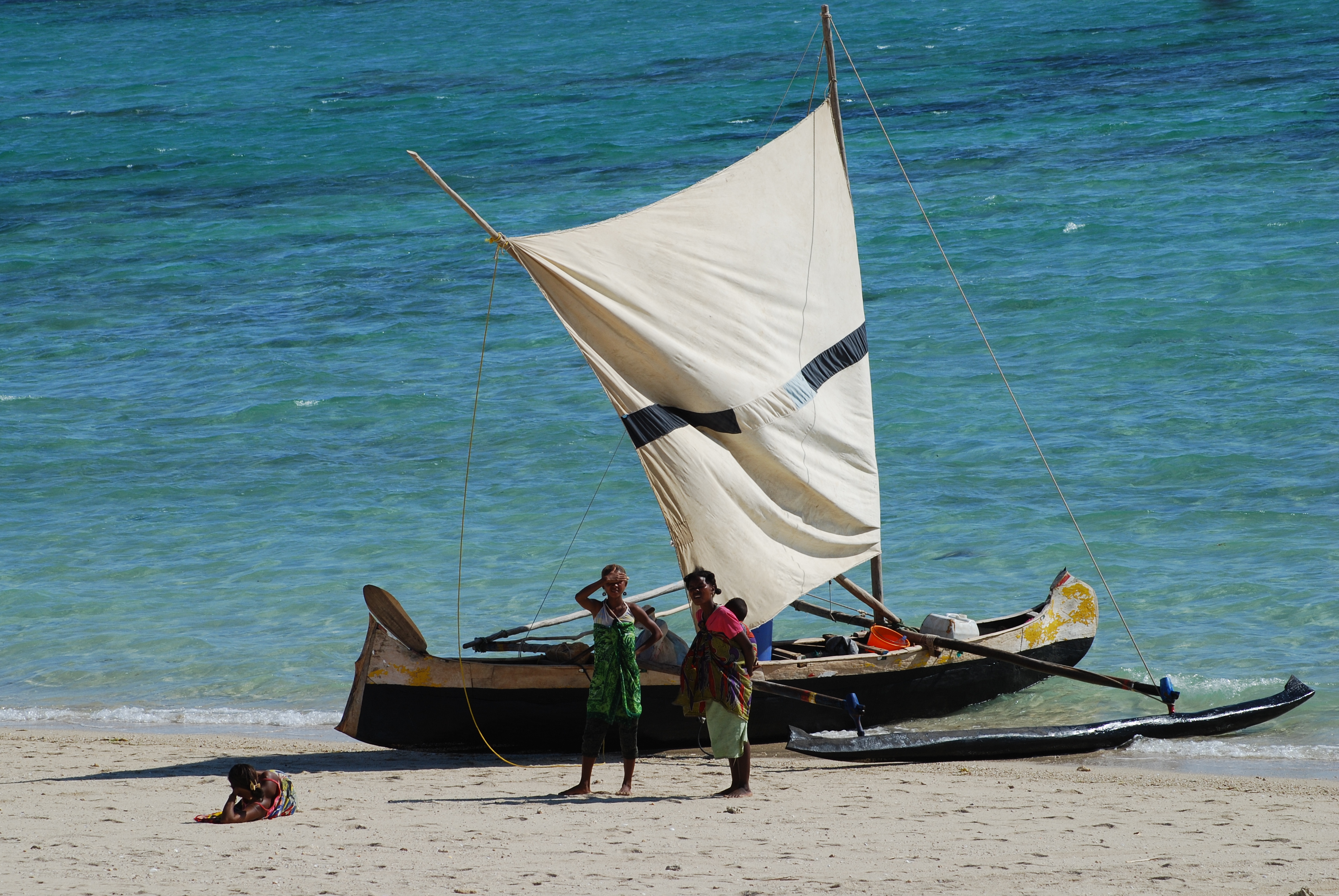|
Flat-bottomed Boat
A flat-bottomed boat is a boat with a shallow draft, two-chined hull, which allows it to be used in shallow bodies of water, such as rivers, because it is less likely to ground. The flat hull also makes the boat more stable in calm water, which is good for hunters and anglers. However this design becomes less stable in choppy water. This is because it causes the boat to travel ''on'' the water, instead of ''through'' it, as a boat with a rounded or V-shaped hull would. Flat hulls are simple to construct, making them popular with boat-building hobbyists. In Britain they came to popular notice during the planned French invasion of Britain in 1759, when a large-number of flat-bottomed boats were prepared by the French to ferry their invasion force across the channel and a number were destroyed during the British Raid on Le Havre. The flat-bottoms are mentioned in the song '' Heart of Oak'' written by David Garrick during 1759. Types *Barge *Bateau * Bull boat * Car flo ... [...More Info...] [...Related Items...] OR: [Wikipedia] [Google] [Baidu] |
Pirogue
A pirogue ( or ), also called a piragua or piraga, is any of various small boats, particularly dugouts and canoes. The word is French and is derived from Spanish ''piragua'' , which comes from the Carib '. Description The term 'pirogue' does not refer to a specific kind of boat, but is a generic term for small boats in regions once colonized by France and Spain, particularly dugouts made from a log. In French West Africa, the term refers to handcrafted banana-shaped boats used by traditional fishermen. In Madagascar, it also includes the more elaborate Austronesian ''lakana'' outrigger canoe. Pirogues are usually propelled by paddles that have one blade (as opposed to a kayak paddle, which has two). It can also be punted with a push pole in shallow water. Small sails are built by local fishermen and they can also be employed. There are two types of sails with differences in their shapes, the square one is used mainly for fishing near the coast and is only useful for ... [...More Info...] [...Related Items...] OR: [Wikipedia] [Google] [Baidu] |
Landing Ship, Tank
A Landing Ship, Tank (LST) is a ship first developed during World War II (1939–1945) to support amphibious operations by carrying tanks, vehicles, cargo, and landing troops directly onto a low-slope beach with no dock (maritime), docks or piers. The shallow draft and bow doors and ramps enabled amphibious assaults on almost any beach. The LST had a highly specialized design that enabled ocean crossings as well as shore groundings. The bow (ship), bow had a large door that could open, deploy a ramp and unload vehicles. The LST had a Flat-bottomed boat, flat keel that allowed the ship to be beaching (nautical), beached and stay upright. The twin propellers and rudders had protection from ship grounding, grounding. The LSTs served across the globe during World War II, including in the Pacific War and in the European theatre of World War II, European theater. The first tank landing ships were built to British requirements by converting existing ships; the UK and the US then collab ... [...More Info...] [...Related Items...] OR: [Wikipedia] [Google] [Baidu] |
Keelboat
A keelboat is a riverine cargo-capable working boat, or a small- to mid-sized recreational sailing yacht. The boats in the first category have shallow structural keels, and are nearly flat-bottomed and often used leeboards if forced in open water, while modern recreational keelboats have prominent fixed fin keels, and considerable draft. The two terms may draw from cognate words with different final meaning. A keel boat, keelboat, or keel-boat is a type of usually long, narrow cigar-shaped riverboat, or unsheltered water barge A barge is typically a flat-bottomed boat, flat-bottomed vessel which does not have its own means of mechanical propulsion. Original use was on inland waterways, while modern use is on both inland and ocean, marine water environments. The firs ... which is sometimes also called a poleboat—that is built about a slight keel and is designed as a boat built for the navigation of rivers, shallow lakes, and sometimes canals that were commonly used ... [...More Info...] [...Related Items...] OR: [Wikipedia] [Google] [Baidu] |
Jon Boat
A johnboat is a flat-bottomed boat constructed of aluminum, fiberglass, wood, or polyethelene with one, two, or three seats, usually bench type. They are suitable for fishing, hunting and cruising. The nearly flat hull of a johnboat tends to ride ''over'' the waves rather than cut ''through'' them as a V-hull might; this shallow draft – only a few inches – enables the johnboat to operate in very shallow water, but limits its use to calm waters. Johnboats typically have a transom onto which an outboard motor can be mounted. They are simple, easy to maintain, and inexpensive, though with many options to upgrade. Typical options may include live wells/bait wells, side or center consoles, factory-installed decks and floors, electrical wiring, accessory pads/mountings, and casting and poling platforms. Johnboats are available commercially between long and wide, though custom sizes may be found. The design includes an open hull, without a bilge, leaving the ribs exposed. Man ... [...More Info...] [...Related Items...] OR: [Wikipedia] [Google] [Baidu] |
Gondola
The gondola (, ; , ) is a traditional, flat-bottomed Venetian rowing boat, well suited to the conditions of the Venetian lagoon. It is typically propelled by a gondolier, who uses a rowing oar, which is not fastened to the hull, in a sculling manner, and also acts as the rudder. The uniqueness of the gondola includes its being asymmetrical along the length, making the single-oar propulsion more efficient. For centuries, the gondola was a major means of transportation and the most common watercraft within Venice. In modern times, the boats still do have a role in public transport in the city, serving as ''traghetti'' (small ferries) over the Grand Canal operated by two oarsmen. Various types of gondola boats are also used in special regattas (rowing races) held amongst gondoliers. Their primary role today, however, is to carry tourists on rides at fixed rates. There are approximately 400 licensed gondoliers in Venice and a similar number of boats, down from the thousands ... [...More Info...] [...Related Items...] OR: [Wikipedia] [Google] [Baidu] |
Flatboat
A flatboat (or broadhorn) was a rectangular flat-bottomed boat with square ends used to transport freight and passengers on inland waterways in the United States. The flatboat could be any size, but essentially it was a large, sturdy tub with a hull. A flatboat was almost always a one-way (downstream) vessel, and was usually dismantled for lumber when it reached its destination. Early History The flatboat trade first began in 1781, with Pennsylvania farmer Jacob Yoder building the first flatboat at Old Redstone Fort on the Monongahela River. Yoder's ancestors immigrated from Switzerland, where small barges called weidlings are still common today, having been used for hundreds of years to transport goods downriver. Yoder shipped flour down the Ohio River and Mississippi River to the port of New Orleans. Other flatboats would follow this model, using the current of the river to propel them to New Orleans where their final product could be shipped overseas. Through th ... [...More Info...] [...Related Items...] OR: [Wikipedia] [Google] [Baidu] |
Dutch Barge
A Dutch barge is a traditional flat-bottomed shoal-draught barge, originally used to carry cargo in the shallow '' Zuiderzee'' and the waterways of The Netherlands. There are many types of Dutch barge, with characteristics determined by regional conditions and traditions. Originally, Dutch barges were sailing craft with wooden hulls. Today, while few wooden examples remain, there are many steel barges that are 100 years old or more. Although most Dutch barges have been converted to motor-propulsion, ''schuyt'' sailing contests are still held on the IJsselmeer and on the Wadden Sea ( Waddenzee). Dutch barges have become popular live-aboard leisure craft, and brand-new "Dutch-style" examples continue to be built. The Dutch barge A typical traditional Dutch barge would have gaff rig, a bluff bow and stern, a pair of leeboards and a large rudder. The leeboards and rudder would be raised by an arrangement of blocks and tackles. Schuyts engaged in eel fishing were said to have b ... [...More Info...] [...Related Items...] OR: [Wikipedia] [Google] [Baidu] |
Durham Boat
The Durham boat was a large wooden, flat-bottomed, double-ended freight boat used on interior waterways in North America beginning in the middle of the 18th century. They were replaced by larger, more efficient canal boats during the canal era beginning with the opening of the Erie Canal in 1825. The Durham name became associated with this boat type due to their use by Durham Ironworks, based in Durham Township, Pennsylvania, which used them to haul freight on the Delaware River. They are also noted for their use in George Washington's crossing of the Delaware River on December 25 and 26, 1776 during the American Revolutionary War. Construction Durham boats were flat-bottomed and double-ended, much like large bateau in both construction and appearance. Beyond that, very little is known of construction details. No plans exist and likely they were not used. No extant remains have been found and very little written description exists. It is believed that they were built with heavy ... [...More Info...] [...Related Items...] OR: [Wikipedia] [Google] [Baidu] |
Dory (boat)
A dory is a small, shallow-draft (hull), draft boat, about long. It is usually a lightweight boat with high sides, a flat bottom and sharp bows. It is easy to build because of its simple lines. For centuries, the dory has been used as a traditional fishing boat, both in coastal waters and in the open sea. The term 'dory' is attested in 1700-10 in American English, and possibly derived from Miskito language, Miskito dóri or dúri, a canoe or small round-bottomed boat, chiefly used in Central America and the Caribbean. Definition Strictly speaking, the only true defining characteristic of the dory is that it is planked with wide straight boards running fore-and-aft; "It should be well understood, that it is the dory's special mode of construction, not its hull shape, that sets it, and its related sub-types apart from other boats".Gardner, page 15. More generally speaking, the dory can be defined as a small boat which has: * a flat bottom, with the bottom planks fastened lengthw ... [...More Info...] [...Related Items...] OR: [Wikipedia] [Google] [Baidu] |








